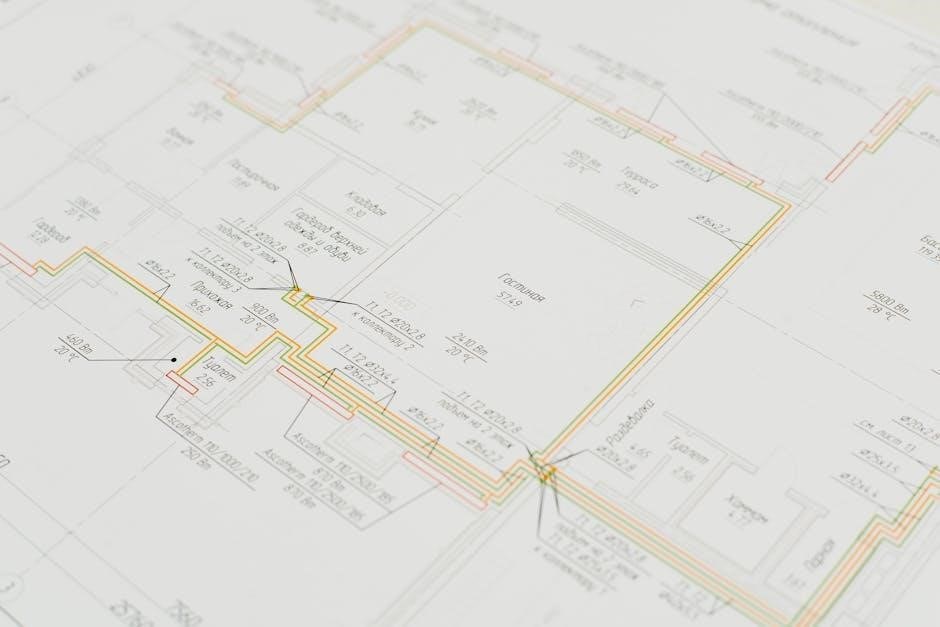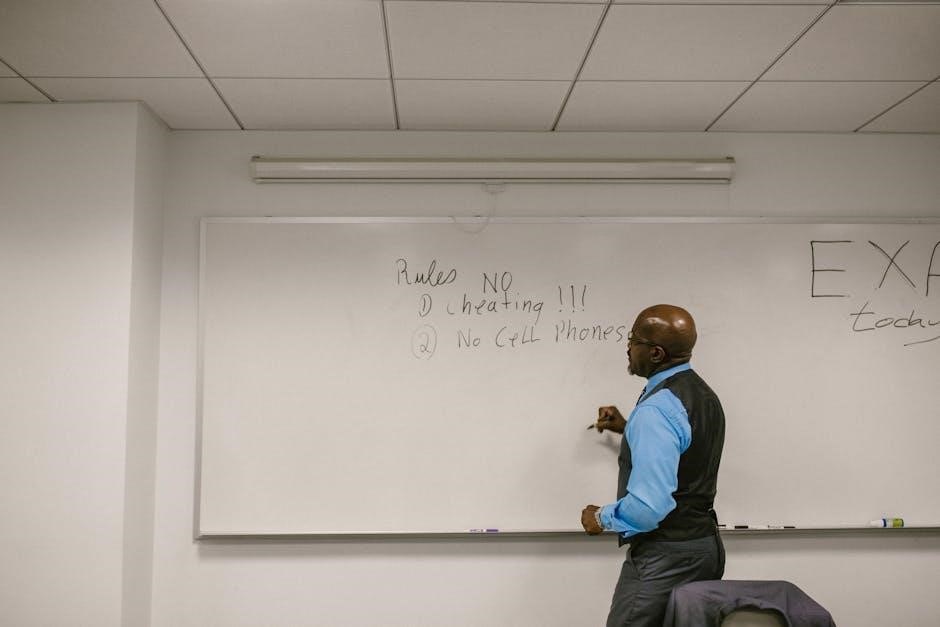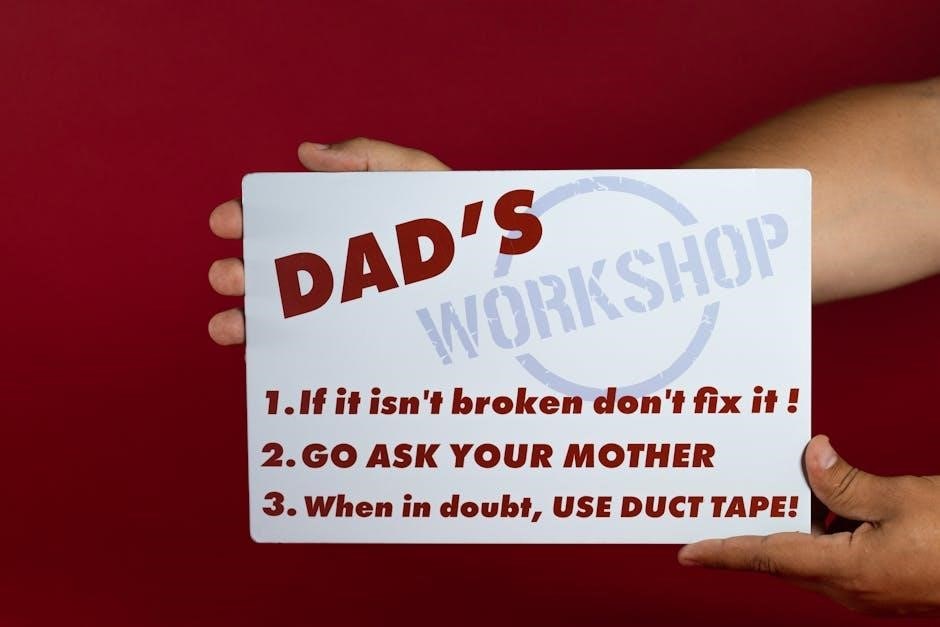Hy-Line Brown Management Guide: A Comprehensive Plan
Hy-Line provides detailed management guides‚ often in PDF format‚ outlining best practices for maximizing flock performance based on extensive field experience and research.
Hy-Line Brown is a leading commercial brown egg layer‚ globally recognized for its excellent performance and adaptability. Hy-Line International consistently delivers comprehensive resources‚ including detailed management guides often available as PDF downloads‚ to support producers.
These guides are built upon years of research and practical field experience‚ ensuring optimal flock health‚ egg production‚ and overall profitability. Understanding the specific needs of the Hy-Line Brown‚ as detailed in these resources‚ is crucial for achieving its full genetic potential. Producers can access these valuable tools to refine their husbandry practices;
Genetic Potential and Management Importance
The Hy-Line Brown possesses significant genetic potential for high egg yield‚ superior livability‚ and excellent egg quality. However‚ realizing this potential is entirely dependent on diligent management practices. Hy-Line International emphasizes this connection‚ providing detailed management guides – frequently in PDF format – to assist producers.
These guides aren’t merely recommendations; they are essential for translating genetic superiority into tangible economic benefits. Consistent adherence to best practices‚ as outlined in these resources‚ ensures optimal flock health and maximizes return on investment. Ignoring these guidelines will inevitably limit performance.

Hy-Line Brown Commercial Layer Management
Successful Hy-Line Brown commercial layer production hinges on a comprehensive management approach. Hy-Line International’s detailed management guides‚ readily available as PDF downloads‚ are crucial resources. These guides cover all aspects‚ from chick arrival through peak production and eventual decline.
Key areas addressed include proper housing‚ optimized feeding programs tailored to each growth stage‚ diligent health monitoring‚ and strict biosecurity protocols. Utilizing these resources ensures producers can consistently achieve high egg output‚ maintain excellent egg quality‚ and maximize profitability with their Hy-Line Brown flocks.
Hy-Line Brown Parent Stock Management
Hy-Line Brown parent stock management demands meticulous attention to detail‚ differing significantly from commercial layer rearing. Hy-Line International provides specialized management guides‚ often in PDF format‚ specifically designed for optimizing reproductive performance. These guides emphasize maintaining optimal flock health‚ ensuring consistent egg production for hatching‚ and maximizing chick quality.
Successful parent stock management requires precise control of nutrition‚ lighting‚ and environmental conditions. Producers must prioritize flock uniformity and minimize stress to achieve peak fertility and hatchability rates. Accessing and implementing the recommendations within these PDF guides is essential.
Key Differences in Commercial vs. Parent Stock Management
Hy-Line Brown management diverges significantly between commercial layers and parent stock. Commercial flocks prioritize egg mass‚ while parent stock focus on reproductive efficiency. Hy-Line’s detailed management guides‚ available as PDF downloads‚ clearly delineate these differences.
Parent stock require more precise nutritional control‚ particularly regarding protein and energy levels‚ to support egg formation and sperm production. Lighting programs are also crucial for stimulating reproductive cycles. These PDF resources highlight the need for stricter biosecurity and health monitoring in parent flocks to safeguard future generations.
Chick Management & Brooding
Hy-Line Brown chicks demonstrate adaptability to both floor and cage brooding systems‚ as detailed in Hy-Line’s comprehensive management guide‚ often available as a PDF. These guides emphasize minimal special hatchery services are needed beyond essential vaccinations.
Successful brooding requires precise temperature control and adequate ventilation to ensure uniform chick development. The PDF resources stress the importance of providing easy access to feed and water during the initial brooding phase. Consistent monitoring of chick behavior and weight gain is vital for early identification of potential issues.
Floor vs. Cage Brooding Systems
Hy-Line Brown chicks‚ according to the detailed management guide available in PDF format‚ exhibit equal adaptability to both floor and cage brooding systems. The choice often depends on existing farm infrastructure and operational preferences.
Floor brooding necessitates careful litter management to maintain dryness and prevent coccidiosis. Cage brooding‚ conversely‚ offers better control over hygiene and reduces disease transmission. Hy-Line’s PDF resources provide specific recommendations for space allocation‚ temperature regulation‚ and ventilation tailored to each system‚ ensuring optimal chick health and uniform growth.
Vaccination Requirements for Hy-Line Brown Chicks
The Hy-Line Brown commercial management guide‚ readily available as a PDF download‚ emphasizes that these chicks require no specialized hatchery services except for vaccination. A proactive vaccination program is crucial for preventing common poultry diseases and maximizing flock performance.
Hy-Line’s PDF outlines a recommended vaccination schedule‚ typically including protection against Marek’s disease‚ Newcastle disease‚ infectious bronchitis‚ and Gumboro disease. Local disease challenges should also inform vaccination protocols. Consult with a veterinarian to tailor a program specific to your region and flock’s needs‚ as detailed in the guide.
Housing Requirements
The Hy-Line Brown management guide‚ accessible in PDF format‚ details crucial housing considerations for optimal bird welfare and productivity. Proper housing protects birds from environmental stressors and disease. The guide stresses the importance of clean‚ dry‚ and well-ventilated facilities.
Hy-Line’s PDF provides specific recommendations for space allocation‚ ventilation rates‚ and temperature control. Adequate space minimizes stress and aggression‚ while proper ventilation removes harmful gases and maintains air quality. Maintaining optimal temperature is vital‚ especially during brooding‚ as outlined within the comprehensive guide.
Space Allocation per Bird

The Hy-Line Brown management guide‚ available as a PDF download‚ emphasizes that appropriate space allocation is fundamental to maximizing production and minimizing behavioral issues. Overcrowding leads to stress‚ feather pecking‚ and reduced egg output;
Hy-Line’s PDF document specifies recommended floor space per bird at different ages‚ ranging from higher densities during brooding to increased space as birds mature. Cage systems also have specific space requirements detailed within the guide. Adhering to these recommendations ensures comfortable movement‚ access to feed and water‚ and overall flock health‚ as outlined in the comprehensive resource.
Ventilation and Temperature Control
The Hy-Line Brown management guide‚ readily accessible in PDF format‚ stresses the critical importance of precise ventilation and temperature control for optimal flock performance. Maintaining the correct environment minimizes stress and supports healthy growth and egg production.
Hy-Line’s PDF provides detailed temperature charts for each stage of the bird’s life‚ from chick to mature layer. Proper ventilation removes excess moisture‚ ammonia‚ and dust‚ preventing respiratory issues. The guide emphasizes monitoring temperature and adjusting ventilation systems to maintain ideal conditions‚ ensuring a comfortable and productive environment for the birds.
Feeding Program
The Hy-Line Brown management guide‚ available as a comprehensive PDF‚ details a carefully structured feeding program crucial for maximizing genetic potential. It outlines distinct dietary phases: starter‚ grower‚ and layer‚ each formulated to meet the bird’s evolving nutritional needs.
Hy-Line’s PDF emphasizes providing balanced rations with appropriate protein‚ energy‚ vitamins‚ and minerals. The guide specifies nutrient requirements at each stage‚ ensuring optimal growth‚ egg production‚ and egg quality. Consistent feed quality and accessibility are also highlighted as key factors for a successful feeding program‚ directly impacting flock health and profitability.
Starter‚ Grower‚ and Layer Diets

The Hy-Line Brown management guide PDF meticulously details the three distinct dietary phases. Starter diets‚ fed during the first weeks‚ prioritize protein for rapid chick development. Grower diets‚ implemented as birds mature‚ balance protein and energy for skeletal growth and feathering.
Finally‚ layer diets‚ initiated before egg production‚ are calcium-rich to support shell formation and maintain egg quality. The PDF provides specific nutrient recommendations for each phase‚ emphasizing the importance of transitioning diets smoothly. Consistent diet formulation‚ as outlined in the guide‚ is vital for optimal performance.
Nutrient Requirements at Each Stage
The Hy-Line Brown management guide PDF comprehensively outlines precise nutrient needs throughout the hen’s lifecycle. Chicks require high protein levels (around 20-22%) for initial growth‚ alongside essential amino acids. Grower diets gradually reduce protein (16-18%) while increasing energy for continued development;
Layer diets necessitate a significant calcium boost (3.5-4.0%) for strong eggshells‚ plus adequate phosphorus and vitamin D3. The PDF details specific vitamin and mineral premix recommendations. Maintaining these precise nutrient balances‚ as detailed in the guide‚ is crucial for maximizing egg production and quality.
Water Management

The Hy-Line Brown management guide PDF emphasizes water as critically important‚ often exceeding feed in daily necessity. Consistent‚ clean water access is paramount for optimal health and egg production. The guide details recommended water temperatures‚ adjusting for seasonal changes to encourage intake.

Regular monitoring of water quality‚ including pH and mineral content‚ is advised. Water sanitation practices‚ such as chlorination or UV sterilization‚ are outlined to prevent bacterial growth. Proper nipple drinker or bell drinker maintenance‚ as described in the PDF‚ ensures consistent availability.
Water Quality and Availability
The Hy-Line Brown management guide PDF stresses that water must be palatable and free from contaminants. Ideal water sources include municipal supplies or well water‚ regularly tested for bacterial‚ chemical‚ and mineral imbalances. Maintaining consistent water pressure is crucial for nipple drinkers‚ ensuring all birds have access.
The PDF recommends monitoring water pH levels‚ aiming for a range of 6.0 to 7.0. Biofilm buildup within water lines is a concern‚ addressed through regular flushing and sanitization. Adequate water availability‚ especially during peak production‚ directly impacts egg size and overall flock performance‚ as detailed in the guide.
Water Sanitation Practices
The Hy-Line Brown management guide PDF emphasizes a proactive approach to water sanitation. Regular cleaning and disinfection of water lines are paramount‚ utilizing approved sanitizers according to manufacturer instructions. The PDF details a shock treatment protocol upon chick placement and periodic maintenance thereafter.
Biofilm control is a key focus‚ with recommendations for flushing lines before and after sanitizer applications. Monitoring water for bacterial contamination through routine testing is advised. Maintaining clean drinker nipples and preventing algae growth are also highlighted in the PDF‚ ensuring a consistently hygienic water supply for optimal flock health.

Egg Production Management

The Hy-Line Brown management guide PDF stresses careful monitoring of egg production curves. Peak production typically occurs within the first 20-30 weeks‚ with a gradual decline thereafter. The PDF details strategies to mitigate decline‚ including nutritional adjustments and environmental control.
Consistent egg handling procedures‚ as outlined in the PDF‚ are crucial for maintaining quality. Factors like shell strength‚ yolk color‚ and albumen height are addressed. Regular egg room temperature and humidity control are also recommended. The PDF provides guidance on identifying and addressing potential production challenges.
Peak Production and Decline
The Hy-Line Brown management guide PDF highlights that peak production generally occurs between 25-30 weeks of age‚ often exceeding 95% lay. However‚ the PDF emphasizes that a consistent‚ gradual decline is natural. Factors influencing decline‚ such as age‚ nutrition‚ and environmental stressors‚ are detailed.
The PDF recommends proactive management during decline‚ including dietary adjustments to support shell quality and maintaining optimal lighting programs. Monitoring flock uniformity and culling non-productive birds are also advised. The Hy-Line guide stresses that understanding the natural production curve is key to maximizing overall yield.
Egg Quality Factors
The Hy-Line Brown management guide PDF details several factors impacting egg quality‚ including shell strength‚ albumen height‚ and yolk color. Proper calcium and vitamin D3 supplementation‚ as outlined in the PDF‚ are crucial for robust shells. Maintaining consistent feed quality and minimizing stress are also emphasized.
The PDF notes that yolk color is influenced by dietary pigments. Regular egg inspections‚ as recommended by Hy-Line‚ help identify and address quality issues promptly. The guide stresses that consistent egg quality is vital for marketability and consumer satisfaction‚ and provides detailed troubleshooting advice within the PDF.
Health Management & Biosecurity
The Hy-Line Brown management guide PDF prioritizes proactive health management and robust biosecurity protocols. It details common diseases affecting Hy-Line Brown layers and preventative vaccination schedules. Strict adherence to biosecurity measures‚ as outlined in the PDF‚ is essential to minimize disease introduction and spread.
The PDF emphasizes controlled access to facilities‚ proper sanitation of equipment‚ and effective pest control. Regular monitoring of flock health and prompt veterinary consultation are also recommended. Implementing a comprehensive biosecurity plan‚ detailed within the PDF‚ safeguards flock health and optimizes production efficiency.
Common Diseases and Prevention
The Hy-Line Brown management guide PDF comprehensively addresses prevalent diseases‚ including infectious bronchitis‚ Newcastle disease‚ and egg drop syndrome. It details preventative vaccination programs tailored for Hy-Line Brown layers‚ emphasizing timely administration for optimal immunity.

The PDF also highlights the importance of biosecurity to minimize disease introduction. Regular monitoring for clinical signs‚ prompt isolation of sick birds‚ and diagnostic testing are crucial. The PDF provides guidance on sanitation practices and proper disposal of mortalities to prevent disease spread‚ ensuring a healthy and productive flock.
Biosecurity Protocols for Flock Health
The Hy-Line Brown management guide PDF stresses robust biosecurity as fundamental to flock health. Strict access control‚ including visitor limitations and disinfection protocols‚ are detailed. The PDF emphasizes thorough cleaning and disinfection of housing‚ equipment‚ and vehicles.
Personnel hygiene‚ such as dedicated clothing and footwear‚ is paramount. The PDF outlines effective pest control measures to prevent disease transmission. Proper waste management and water sanitation are also covered. Implementing these protocols‚ as outlined in the PDF‚ minimizes disease risk and safeguards the Hy-Line Brown flock’s productivity.

Record Keeping & Data Analysis
The Hy-Line Brown management guide PDF highlights the critical role of detailed record-keeping for optimizing performance. Tracking key production metrics – egg production‚ feed consumption‚ mortality‚ and egg quality – is essential. The PDF recommends consistent data collection and analysis to identify trends and potential issues.
Analyzing this data allows for informed decision-making regarding adjustments to feeding‚ housing‚ or health protocols. The PDF emphasizes using data to pinpoint areas for improvement and maximize the genetic potential of the Hy-Line Brown flock‚ ultimately boosting profitability.
Tracking Production Metrics
The Hy-Line Brown management guide PDF stresses the importance of diligently tracking several key production metrics. These include daily egg production percentages‚ accurately recording hen-day egg production‚ and monitoring feed conversion ratios. Regular weight gain assessments‚ alongside mortality rates‚ are also crucial components.
Furthermore‚ the PDF advises detailed tracking of egg quality parameters – shell strength‚ albumen height‚ and yolk color – to ensure market standards are met. Consistent recording of these metrics‚ as detailed in the PDF‚ provides a baseline for evaluating flock health and performance.
Analyzing Data for Improvement
The Hy-Line Brown management guide PDF emphasizes that collected production metrics aren’t valuable unless thoroughly analyzed. This PDF recommends comparing current flock performance against historical data and breed standards to identify areas needing attention. Deviations in egg production‚ feed conversion‚ or egg quality should trigger investigation.
The PDF suggests utilizing data to pinpoint potential issues – nutritional deficiencies‚ disease outbreaks‚ or environmental stressors. Analyzing trends allows for proactive adjustments to feeding programs‚ housing conditions‚ or biosecurity protocols‚ ultimately maximizing flock profitability as detailed in the Hy-Line resource.
Updated Management Guides & Resources
Hy-Line consistently updates its management guides‚ available as PDF downloads‚ to reflect the latest research and best practices in poultry production. In November‚ updated commercial Management Guides for Hy-Line Brown were released. These PDF resources provide comprehensive information on all aspects of flock management‚ from chick arrival to end of lay.
Accessing the most current Hy-Line Brown management guide PDF ensures producers have the latest recommendations for optimizing genetic potential. Hy-Line’s website is the primary source for these valuable resources‚ offering downloadable PDFs and other support materials.
Hy-Line Technical Services Support
Hy-Line’s Technical Services team offers extensive support to producers utilizing the Hy-Line Brown. This support complements the detailed management guide PDF resources available online. Experts provide guidance on flock health‚ nutrition‚ and overall management practices‚ ensuring optimal performance.
Producers can directly access this expertise for personalized assistance‚ interpreting data from their Hy-Line Brown flocks‚ and troubleshooting any challenges. The team’s knowledge‚ combined with the PDF guide‚ empowers producers to maximize the genetic potential of their birds and achieve superior results.
Maximizing Hy-Line Brown Performance
Hy-Line Brown hens offer significant genetic potential for egg production‚ but realizing this potential hinges on diligent management. Utilizing the comprehensive Hy-Line Brown management guide PDF is crucial for success. Consistent application of best practices‚ covering chick rearing through peak production‚ ensures optimal flock health and profitability.
Regularly reviewing and implementing updates from Hy-Line Technical Services‚ alongside the PDF guide‚ will further refine management strategies. Proactive monitoring‚ data analysis‚ and a commitment to biosecurity are key to consistently maximizing the performance of your Hy-Line Brown layers.


























































































